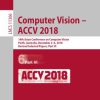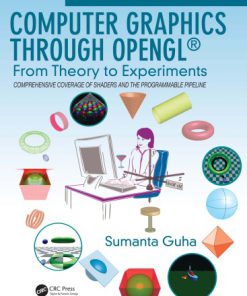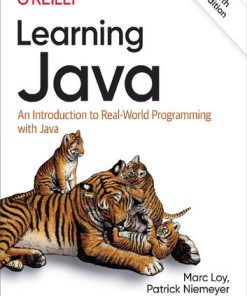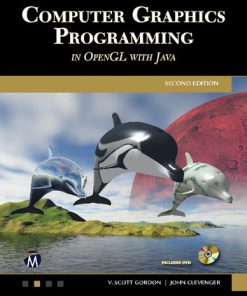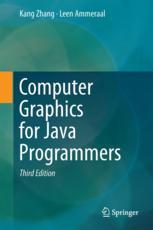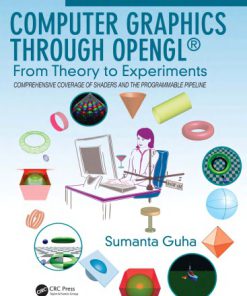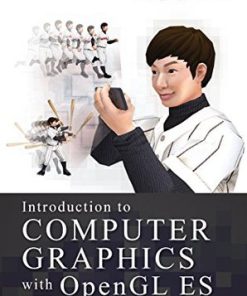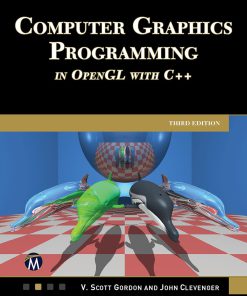Computer Graphics Programming in OpenGL with Java Gordon 1683922204 9781683922209
$50.00 Original price was: $50.00.$25.00Current price is: $25.00.
This completed downloadable of Computer Graphics Programming in OpenGL with Java Gordon
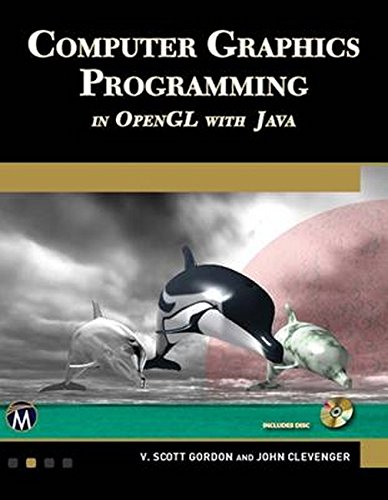
Instant downloaded Computer Graphics Programming in OpenGL with Java Gordon pdf docx epub after payment.
Product details:
- ISBN 10: 1683922204
- ISBN 13: 9781683922209
- Author: Gordon
This new edition provides step-by-step instruction on modern 3D graphics shader programming in OpenGL, along with its theoretical foundations. It is appropriate both for computer science undergraduate graphics programming courses in degree programs that emphasize Java, and for professionals interested in mastering 3D graphics skills who prefer Java. It has been designed in a 4-color, “teach-yourself” format with numerous examples that the reader can run just as presented. New sections have been added covering soft shadows, performance optimization, Nsight debugging, as well as updated industry-standard libraries and steps for running the examples on a Macintosh. Includes companion files with all of the source code, models, textures, skyboxes and normal maps used in the book.
Table of contents:
Chapter 1 Getting Started
1.1 Languages and Libraries
1.1.1 Java
1.1.2 OpenGL / GLSL
1.1.3 JOGL
1.1.4 JOML
1.2 Installation and Configuration
Chapter 2 The OpenGL Graphics Pipeline
2.1 The OpenGL Pipeline
2.1.1 Java/JOGL Application
2.1.2 Vertex and Fragment Shaders
2.1.3 Tessellation
2.1.4 Geometry Shader
2.1.5 Rasterization
2.1.6 Fragment Shader
2.1.7 Pixel Operations
2.2 Detecting OpenGL and GLSL Errors
2.3 Reading GLSL Source Code from Files
2.4 Building Objects from Vertices
2.5 Animating a Scene
2.6 Organizing the Java Code Files
Chapter 3 Mathematical Foundations
3.1 3D Coordinate Systems
3.2 Points
3.3 Matrices
3.4 Transformation Matrices
3.4.1 Translation
3.4.2 Scaling
3.4.3 Rotation
3.5 Vectors
3.5.1 Uses for Dot Product
3.5.2 Uses for Cross Product
3.6 Local and World Space
3.7 Eye Space and the Synthetic Camera
3.8 Projection Matrices
3.8.1 The Perspective Projection Matrix
3.8.2 The Orthographic Projection Matrix
3.9 Look-At Matrix
3.10 GLSL Functions for Building Matrix Transforms
Chapter 4 Managing 3D Graphics Data
4.1 Buffers and Vertex Attributes
4.2 Uniform Variables
4.3 Interpolation of Vertex Attributes
4.4 Model-View and Perspective Matrices
4.5 Our First 3D Program—A 3D Cube
4.6 Rendering Multiple Copies of an Object
4.6.1 Instancing
4.7 Rendering Multiple Different Models in a Scene
4.8 Matrix Stacks
4.9 Combating “Z-Fighting” Artifacts
4.10 Other Options for Primitives
4.11 Coding for Performance
4.11.1 Minimizing Dynamic Memory Allocation
4.11.2 Pre-Computing the Perspective Matrix
4.11.3 Back-Face Culling
Chapter 5 Texture Mapping
5.1 Loading Texture Image Files
5.2 Texture Coordinates
5.3 Creating a Texture Object
5.4 Constructing Texture Coordinates
5.5 Loading Texture Coordinates into Buffers
5.6 Using the Texture in a Shader: Sampler Variables and Texture Units
5.7 Texture Mapping: Example Program
5.8 Mipmapping
5.9 Anisotropic Filtering
5.10 Wrapping and Tiling
5.11 Perspective Distortion
5.12 Loading Texture Image Files Using Java AWT Classes
Chapter 6 3D Models
6.1 Procedural Models—Building a Sphere
6.2 OpenGL Indexing—Building a Torus
6.2.1 The Torus
6.2.2 Indexing in OpenGL
6.3 Loading Externally Produced Models
Chapter 7 Lighting
7.1 Lighting Models
7.2 Lights
7.3 Materials
7.4 ADS Lighting Computations
7.5 Implementing ADS Lighting
7.5.1 Gouraud Shading
7.5.2 Phong Shading
7.6 Combining Lighting and Textures
Chapter 8 Shadows
8.1 The Importance of Shadows
8.2 Projective Shadows
8.3 Shadow Volumes
8.4 Shadow Mapping
8.4.1 Shadow Mapping (Pass One)—“Draw” Objects from Light Position
8.4.2 Shadow Mapping (Intermediate Step)—Copying the Z-Buffer to a Texture
8.4.3 Shadow Mapping (Pass Two)—Rendering the Scene with Shadows
8.5 A Shadow Mapping Example
8.6 Shadow Mapping Artifacts
8.7 Soft Shadows
8.7.1 Soft Shadows in the Real World
8.7.2 Generating Soft Shadows—Percentage Closer Filtering (PCF)
8.7.3 A Soft Shadow/PCF Program
Chapter 9 Sky and Backgrounds
9.1 Skyboxes
9.2 Skydomes
9.3 Implementing a Skybox
9.3.1 Building a Skybox from Scratch
9.3.2 Using OpenGL Cube Maps
9.4 Environment Mapping
Chapter 10 Enhancing Surface Detail
10.1 Bump Mapping
10.2 Normal Mapping
10.3 Height Mapping
Chapter 11 Parametric Surfaces
11.1 Quadratic Bézier Curves
11.2 Cubic Bézier Curves
11.3 Quadratic Bézier Surfaces
11.4 Cubic Bézier Surfaces
Chapter 12 Tessellation
12.1 Tessellation in OpenGL
12.2 Tessellation for Bézier Surfaces
12.3 Tessellation for Terrain/Height Maps
12.4 Controlling Level of Detail (LOD)
Chapter 13 Geometry Shaders
13.1 Per-Primitive Processing in OpenGL
13.2 Altering Primitives
13.3 Deleting Primitives
13.4 Adding Primitives
13.5 Changing Primitive Types
Chapter 14 Other Techniques
14.1 Fog
14.2 Compositing/Blending/Transparency
14.3 User-Defined Clipping Planes
14.4 3D Textures
14.5 Noise
14.6 Noise Application—Marble
14.7 Noise Application—Wood
14.8 Noise Application—Clouds
14.9 Noise Application—Special Effects
People also search:
pikuma 3d computer graphics programming
computer graphics programming course
computer graphics programming in opengl with c++ 3rd edition pdf
computer graphics programming jobs
scratchapixel gentle introduction to computer graphics (programming)
You may also like…
Uncategorized
Computers - Programming
Computers - Programming
Learning Java An Introduction to Real World Programming with Java Marc Loy
Computers - Computer Graphics & Design
Computers - Programming
Computer Graphics Programming in OpenGL with Java 2nd Edition V. Scott Gordon
Computers - Computer Graphics & Design
Computers - Programming
Computers - Programming
Introduction to Computer Graphics with OpenGL ES First Edition Junghyun Han
Others
Computer Graphics Programming in OpenGL Using C++, Third Edition by Gordon 1501519581 9781501519581


